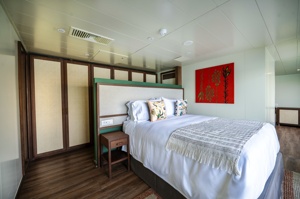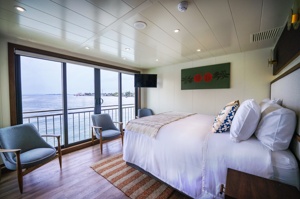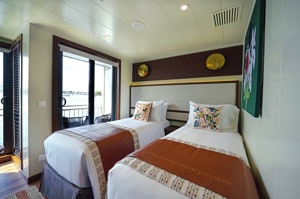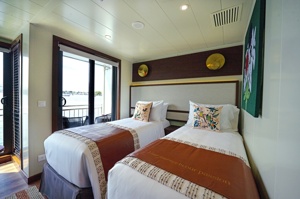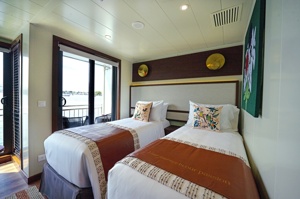Step aboard a world of unparalleled experiences and be warmly welcomed aboard our stunning newly designed AmaMagdalena, an intimate 60-passenger river cruise ship offering the luxury of space and sweeping views as you cruise Colombia's Magdalena River. This beautiful ship features a rejuvenating heated pool on the Sun Deck, a spacious fitness room, a Main Restaurant serving exquisite, regionally inspired Latin American cuisine and Western favorites, as well as an intimate al fresco specialty dining experience. Plus, you will rest your eyes each night in your amenity-filled twin-balcony stateroom, comprised of both a French balcony and an outside balcony, from which you will wake up to a new view each day in one of Colombia's fascinating destinations.
Cruise ID: 33973
Although we leave gratuities to your discretion, many of our guests have asked for general tipping guidelines. Gratuities may be charged on a credit card or given in cash.
7-Night Cruises
Ship's Crew: The entire amount will be divided equally amongst all crew members. Recommendation: 100 Euros per cruise, per guest. (AmaMagna 120 Euros per cruise, per guest)
Cruise Manager: Your Cruise Manager is not part of the ship's crew and is the AmaWaterways representative who also accompanies you on any pre- and/or post-cruise hotel/land extensions you may have booked. Recommendation: 25 Euros per cruise, per guest; 4 Euros for each additional day, per guest for pre- and post-cruise hotel/land extensions.
10-Night Cruises
Ship's Crew: The entire amount will be divided equally amongst all crew members. Recommendation: 143 Euros per cruise, per guest.
Cruise Manager: Your Cruise Manager is not part of the ship's crew and is the AmaWaterways representative who also accompanies you on any pre- and/or post-cruise hotel/land extensions you may have booked. Recommendation: 36 Euros per cruise, per guest; 4 Euros for each additional day, per guest for pre- and post-cruise hotel/land extensions.
11-Night Cruises
Ship's Crew: The entire amount will be divided equally amongst all crew members. Recommendation: 158 Euros per cruise, per guest.
Cruise Manager: Your Cruise Manager is not part of the ship's crew and is the AmaWaterways representative who also accompanies you on any pre- and/or post-cruise hotel/land extensions you may have booked. Recommendation: 40 Euros per cruise, per guest; 4 Euros for each additional day, per guest for pre- and post-cruise hotel/land extensions.
14-Night Cruises
Ship's Crew: The entire amount will be divided equally amongst all crew members. Recommendation: 200 Euros per cruise, per guest. (AmaMagna 240 Euros per cruise, per guest)
Cruise Manager: Your Cruise Manager is not part of the ship's crew and is the AmaWaterways representative who also accompanies you on any pre- and/or post-cruise hotel/land extensions you may have booked. Recommendation: 50 Euros per cruise, per guest; 4 Euros for each additional day, per guest for pre- and post-cruise hotel/land extensions.



